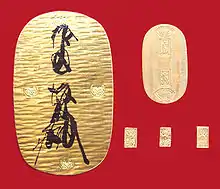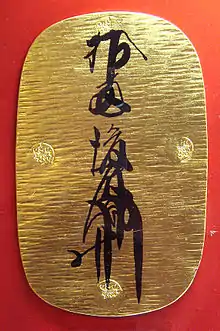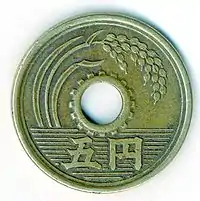Ōban
An Ōban (大判) was a monetary ovoid gold plate, and the largest denomination of Tokugawa coinage. Tokugawa coinage worked according to a triple monetary standard, using gold, silver and bronze coins, each with their own denominations.[1]

Maneki Neko, with Ōban attached to collar
The first Oban – Tenshō Ōban (天正大判) – were minted by the Gotō family under the orders of Hideyoshi in 1588.[2]
The Tenshō Ōban was equivalent to ten Ryōs, or ten Koban (小判) plates, with a weight of 165 g.
References
- Mark Metzler (2006). Lever of empire: the international gold standard and the crisis of liberalism in prewar Japan. Volume 17 of Twentieth Century Japan: The Emergence of a World Power. University of California Press. ISBN 0-520-24420-6.
This article is issued from Wikipedia. The text is licensed under Creative Commons - Attribution - Sharealike. Additional terms may apply for the media files.



